Full-page ad for Ontario Principals’ Council. Take us to school with you. Our Spring issue is now available as a PDF and on the Issuu app.













Full-page ad for Ontario Principals’ Council. Take us to school with you. Our Spring issue is now available as a PDF and on the Issuu app.












as you celebrate in preparation for retirement or for a promotion to vice-principal or principal.

Retirement parties, graduation ceremonies and end-of-year socials are all positive, fun, worthwhile experiences that commemorate many great memories. By the end of the school year, everyone is in a good mood (and not just in anticipation of summer vacation) as we reminisce about the best part of our jobs: the students. This June, make sure to congratulate and celebrate you – this has been a difficult and challenging year for all. You have been forced to dig deep to keep your schools functioning during these difficult and turbulent times.
The great philosopher Winnie the Pooh, once observed (via A.A. Milne), “When you see someone putting on his big boots, you can be pretty sure that an adventure is going to happen.” And what an adventure this year has been! After two
years of strict COVID rules, we thought that this school year would be different and somehow easier to navigate, but that has not been the case. We continue to face staffing shortages; have seen an increase in anti-social behaviours in our school communities; face an increase in mental health concerns with staff, students and colleagues; and continue to see our workload increase. Yet, we have persevered as we always do, knowing we are making a difference.
“When the big things feel out of control, focus on what you love right under your nose” (Charlie Mackesy, The Boy, the Mole, the Fox and the Horse). For us, that focus is our students. When we focus on our students and on making their experience at school welcoming, inclusive and
instilled in a love of learning, it brings us to a different, better place. Visiting the classroom, conversing with students in the hallway, and watching students perform on the stage, on the field, on the court – these are the memories created for our school communities. No one sees the behind-the-scenes chaos or late nights you spend staffing and stressing. All that will be remembered is the caring leaders who made students feel special.
With spring comes a transformation that breathes new life into everything around us, including our schools. Although this time of year is probably the busiest, we find optimism in the preparation for the next school year: hiring, timetabling and welcoming new students and staff. And, for some, there is nostalgia
We are used to being in control and able to “fix” everything, but forces outside of our control have made that difficult. Yet you, the school leaders, have made the school experience as positive and engaging as possible for students. We have the best jobs in the world, and despite the difficult times, the majority of our time is spent celebrating the great things that we get to witness daily and the promise of the great future ahead for the students we serve.
Happy spring, and thank you for being such incredible leaders!
Patsy Agard president@principals.ca @PresidentOPC
Ontario Principals’ Council

20 Queen Street West, 27th Floor
Toronto, Ontario M5H 3R3
Tel: 416-322-6600 or 1-800-701-2362
Fax: 416-322-6618
www.principals.ca

Email: admin@principals.ca
The Register is published digitally three times a year and printed once each fall by the Ontario Principals’ Council (OPC). The views expressed in articles are those of the authors and do not necessarily represent the official position of the OPC. Reproduction of any part of this publication must be authorized by the editor and credited to the OPC and the authors involved. Letters to the editor and submissions on topics of interest to the profession are welcome. Although paid advertisements appear in this publication, the OPC does not endorse any products, services or companies, nor any of the claims made or opinions expressed in the advertisement.
Peggy Sweeney, editor
Daisi Dina, assistant editor
Ruth Hanley, proofreader Nadine Trépanier-Bisson, business manager
Art Direction and Design: Fresh Art & Design Inc.
Advertising: Dovetail Communications Inc. 905-886-6640

SUBMISSIONS & IDEAS
Would you like to contribute to The Register?
Do you have an article, feedback or ideas?
Our editorial team would like to hear from you. Deadlines for submissions are listed below. Go to the OPC website under The Register for further submission and writing guidelines and considerations. Send your articles, reviews, thoughts and ideas to ddina@principals.ca
All submissions are subject to review and selection by the editorial committee.
Content Due May 1
October 1
February 1
For edition releases in October, the content is due May 1. For edition releases in February, the content is due October 1. For edition releases in May, the content is due February 1.
Edition Release October February May





On April 2nd, we celebrated our 25-year anniversary with a Gala Dinner at the Fairmont Royal York Hotel in Toronto. Highlights included a milestone video, a panel discussion with Executive Director Dr. Nadine Trépanier-Bisson, Dr. Andrew B. Campbell, Anna Pons, President Patsy Agard (below left), former Executive Director Allyson Otten and Niigaan Sinclair. The panel discussed the evolution of leadership over the past 25 years. Musical entertainment was provided by Martingrove Collegiate String Ensemble (below centre) and songs performed by Shaundell Paris (below right).




On April 3rd and 4th we hosted the Summit on Public Education in Canada to develop a vision for the future of K-12 education. Summit attendees identified key challenges and potential solutions related to education across Canada, with a vision for future-ready students and a focus on leadership, anti-oppression and anti-colonialism. The event featured keynote speakers (L-R above) Dr. Yong Zhao, Anna Pons, Niigaan Sinclair and panel moderator Dr. Andrew B. Campbell.

The Summit also featured three panel discussions with virtual speakers Eleanor Wong, Olivia SeamoneBrown and Lucy Wiggers. In-person speakers were (L-R above) Fiona Deller, Eva Wong, Norah Marsh, Alice Evans, Rebecca DaFoe, Matthew Sinclair, Ellen Hinnan, Dr. Ann Lopez, Mark Beckles, Joseph Flessa, Aisha Mahmoud, Lisa Cole and Annie Kidder. The voices and Q&A with several virtual and in-person Canadian student guests (left) from across the country were another key feature of the Summit.

Ihonour of our 25-year anniversary, we hosted a Gala Dinner on April 2nd, followed by the Summit on Public Education in Canada on April 3–4. With a focus on leadership, anti-oppression and anti-colonialism, delegates were engaged in pivotal conversations and networking opportunities on leading topics in education. We also held the final session for the Virtual Schools Professional Learning Network and the Vice-Principal Symposium, where VPs engaged in an interactive program covering topics such as student voice, difficult conversations, legal workshops, and equity and inclusivity.
The PL team will continue to provide a variety of opportunities to collaborate and network as the school year wraps up. Participants in the New Administrator Support Program have the option to continue with collaboration spaces such as Equity Connections and Indigenous Connections workshops.

This summer, Members will have the opportunity to engage in two unique learning opportunities related to equitable schools. Reculturing Your School is a full-day workshop on July 6, focusing on transforming school culture into one that is more welcoming for all students and staff. It will support planning and implementing potential changes needed to shift culture to enhance inclusivity and belonging for all students. With an antioppressive lens, Creating Safe and Inclusive Schools (August 14–15) is a Summer Learning Institute that will cover topics including legal aspects of school safety, equity and inclusion, and responding to violence in schools.
The Mentor-Coaching Institute (July 17–19) brings mentoring and coaching together as powerful allies to support a robust process for leading and learning in relationships. Members will be provided with opportunities to practise and integrate skills, attitudes, behaviours and
conversational pathways that a teamoriented leader exemplifies when working with mentees, staff, colleagues and community partners.
For a full list of current and upcoming offerings, please consult the PL webpage. If you have any questions or insights on format or content, please send us an email
Thank you to our partners – including Indigenous community members, board leads and facilitators – for their collaboration and participation in various ways, without whom our work together would not be possible. For the 2023–2024 school year, we will be using feedback received to ensure that learning opportunities continue to be flexible and relevant to the challenges and needs of P/VPs, leading within the current context and realities in schools and boards.
http://cise-egypt.com/pharaohs/
A how-to tip sheet for Members
By the Protective Services Team EllisThe Professional Services Team (PST) assists many Members each year who have been assigned to home pending the completion of an investigation. We have come to learn that this experience is often one of the most debilitating issues faced by Members in their career. To assist Members who may be facing an assignment to home, we have prepared this how-to tip sheet to prepare Members in advance, to the extent that we can.
Note: This article was previously published in 2012 and has been updated to reflect our current environment.


 Illustration by Mike
2SLGBTQQIA+
Illustration by Mike
2SLGBTQQIA+
Note: This article was previously published in 2012 and has been updated to reflect our current environment.
T he Professional Services Team (PST) assists many Members each year who have been assigned to home pending the completion of an investigation. We have come to learn that this experience is often one of the most debilitating issues faced by Members in their career. To assist Members who may be facing an assignment to home, we have prepared this how-to tip sheet to prepare Members in advance, to the extent that we can.

As administrators, principals and vice-principals must manage the competing interests of students, staff and the community they serve. They deal with difficult employees and with employees in difficult situations. Similarly, they also deal with difficult caregivers and caregivers in difficult situations. When administrators manage competing needs and interests, it is not unusual for one party or the other to be dissatisfied. It is inherent to democracy that an individual agency has the right to question the decision-making process of an authority.
It is important to understand that each board has formal and informal complaint/ appeal processes available to employees and families. While it is difficult for individuals to remain objective when they are the target of a complaint, it is often helpful to the individual to frame the complaint as part of a process, rather than a personal attack. It is likely that the real object of the complaint is your role as decision-maker, not your persona as a human being.
Often, Members who have been assigned to home by their employer are not immediately told the reason why, and may wait for weeks before they learn the nature of the allegations. This leads to constant speculation on the Member’s part, causing a great deal of stress and emotional upheaval. School leaders receive a disproportionate number of complaints arising out of their statutory duties and powers. These complaints are often made by individuals who disagree with a decision made. It is not rare for the upset party to complain. Often these complaints fall under human rights, harassment and/or child protection allegations.

Principals supervise the performance and behaviour of staff on behalf of the employer and address concerns related to performance/ behaviour issues. The communication of these concerns may not be well-received by the subject of the concern. As a result, the principal or vice-principal may then become a target of a complaint from an individual staff member

the opc will assist you in determining the scope of your home assignment and what you can and cannot do in relation to your school and staff.
or the union. These complaints can include the following:
• Complaints to the superintendent from the union in the form of meetings, letters, surveys, grievances or formal complaints to the Labour Board
• Complaints of harassment (to the Ontario Human Rights Commission for “protected grounds,” “Workplace,” board policy definition, Collective Agreement definition, or to the Ontario Human Rights Tribunal) and
• Complaints about management style (e.g., authoritarian, threatening, “abuse of power” allegation that the principal was not consultative in implementing change).
Complaints often allege some form of culpable behaviour on the part of the principal or vice-principal, which necessitates an investigation by the board official, a contractor hired by the board or an external agency (e.g., police, child protection). If an investigation reveals that the administrator did engage in unacceptable behaviour that is contrary to board policies or legislation, discipline and/or some other adverse consequence may likely result. Based on our experience, here are some tips for Members to help provide more of an understanding of the assigned-to-home process.
I have been advised by my employer that a complaint has been made against me and that I am to go home.
Should this occur, call the Ontario Principals’ Council (OPC) and speak with one of our Intake Consultants. They will then connect you with one of our Protective Services Consultants. They will be able to offer you support and advice, including a review of what to expect in the investigation process. The consultant will support you through every step of the investigation. As well, the consultant will seek input from an OPC lawyer, if needed.
If applicable, you will be advised on how to respond to a requirement to be interviewed
by an external agency, such as a child protection agency or the police. When the external investigation is completed, the employer usually conducts its own investigation to determine whether you have breached a board policy or procedure. You will have access to OPC assistance throughout the board’s investigation.
One challenge that a Member can face is if a board is unable or unwilling to articulate the specific reason(s) you have been assigned to home, particularly if the allegation/complaint does not involve an external agency. For example, boards often assign an employee to home pending investigation based on an oral or written internal complaint. Boards then want the opportunity to interview the complainant, potential witnesses and the respondent.
It is particularly upsetting to be assigned to home and not know the reason. PST consultants work hard in these early days, and sometimes weeks, to urge boards to quickly communicate the alleged wrongdoing. We remind boards that a respondent has the right to be made aware of all allegations, preferably in advance of the investigation meeting, to ensure they have the opportunity to prepare a full response.
Why have I been sent home? Am I not innocent until proven guilty?
When an alleged incident occurs, school boards commonly assign a principal or viceprincipal to home. The purpose is to enable the board to undertake its investigation without concern about possible interference or ongoing tension/animosity between or among the parties (complainant and respondent).
You are not suspended: a suspension with or without pay is a disciplinary step that an employer might impose after an employee is found to have committed an infraction that gave the employer “just cause.” The notion behind an “assignment home pending the conclusion of an investigation” is to protect • you from allegations of interfering in an investigation and
• the complainant(s) from pressure that your presence in the school might exert.
Boards achieve this separation in widely disparate ways. For example, many also remove the administrator from the board’s communication network and ask that they surrender their keys to the school and/or other board property, while others give the administrator the option of carrying out some of their tasks from home (staffing, report card reading, etc.).
What can I expect while I am on home assignment? Can I continue to communicate with the school and carry out tasks online?
The answer to these questions varies by board and circumstances. The OPC will assist you in determining the scope of your home assignment and what you can and cannot do in relation to your school and staff.
It is important to remember that you are not under “house arrest.” While you should provide the necessary contact information, it is neither necessary nor healthy to sit at home for days, waiting for the phone to ring. Anticipate that this will be an extremely stressful time of uncertainty. To that end, reach out to your support system without breaching any confidentiality issues. Call your Employee Assistance Program to assist you in dealing with the inevitable negative and conflicting emotions. Ask your PST consultant about the Starling Minds Program. Access any board supports. Undertake the activities that normally relieve your stress (exercise, hobbies, reading, etc.). Give yourself permission to engage in these activities during the normal workday. To the extent that you can, choose venues outside of your normal routines to avoid running into parents and/or community members from your school. To be clear, this is not a time to take a vacation or go away on trips during the school week. You do need to be available to participate in investigation meetings as required.
other than to inform you about the process. As such, keep in close contact with your OPC representative for updates or check-ins, and with your healthcare professional for healthrelated concerns.
How long will this take? Why does it take so long?
The process may take much longer than you think. After interviewing the complainant(s), the investigator may also need to interview witnesses. The scheduling of interviews is

one of the following outcomes:
a. Allegation verified
Next steps will then have to be determined with respect to whether charges will be laid.
b. Allegation not verified, behaviour concerning
The agency will issue a letter to the employer and to you to communicate the finding, and inform you that it will maintain a confidential record of the concern on its database.
discovers that the administrator has breached board policy and/or engaged in misconduct, discipline may be imposed that should be proportionate to the degree of the breach. Your PST consultant will do their best to advocate for a timely and unbiased process, which does not leave a Member assigned to home for unreasonable periods of time.
The process is completed, and I have been cleared to go back to school. What do I say?
It is important to develop a communication plan with your SO. The less said, the better, but the message must also be credible. Your PST consultant will assist you with the communications plan and transition back into the school setting.
In January 2023, the OPC released a statement concerning assignments to home and the need for boards to recognize the impact of home assignment on the physical and mental well-being of administrators. We have emphasized that boards should use home assignment as a last, not first, resort and that boards should look for less intrusive methods that would ensure the safety of parties to the investigation, as well as the integrity of the
keep in close contact with your opc representative for updates or check-ins, and with your healthcare professional for health-related concerns.
investigation itself. For example, one option might be reassignment to an alternative site. The OPC will continue to advocate and work closely with boards to develop practices that support administrators through an investigative process, in a manner that honours and respects all parties and causes less trauma and harm to our Members.
For those who do find themselves assigned to home, it is critical that you call the OPC

Protective Services immediately, that you reach out to your support network, that you keep your mental and physical health needs in the forefront and that you seek out health assistance as needed. Your PST consultant will be a key point of contact and support for you, should you find yourself facing an assignment to home.
asayed@principals.ca
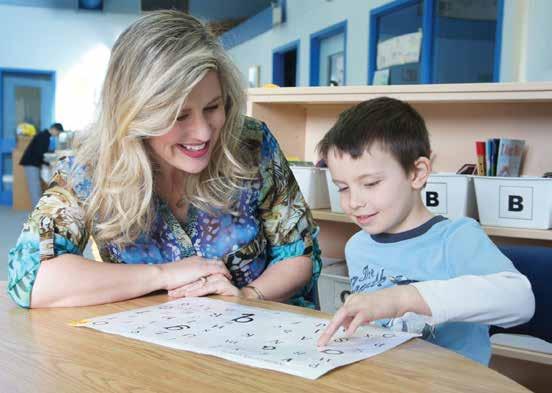
Strong Start is a registered Canadian charity committed to helping children learn to read. We have received additional funding to rapidly expand our reach through partnerships with school boards, schools, educators, volunteers and community stakeholders to help address the children's literacy crisis caused by the pandemic. This unique program mobilizes community, creates capacity for you to help more children and gets measurable results!





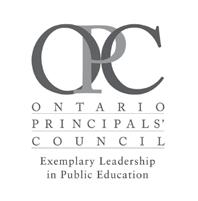





In 1997, the provincial government introduced Bill 160, removing principals and vice-principals from membership in the teacher federations, prohibiting their right to unionize or be included in a bargaining unit. School leaders throughout Ontario were unnerved. What would this mean for us? How would we function without a federation? What protections would we now have? A group of those leaders began to meet, planning how to create an organization that would protect, advocate for and include principals and vice-principals from both panels.
The decision was made to establish a professional association. The planning group met with principals and vice-principals from all 31
public district school boards in the province, discussing the implications of their removal from the teacher federations, debating the best way to move forward and offering a vision for an all-inclusive professional organization.
On December 13th, 1997, in a meeting room of the former Toronto Colony Hotel, the planning group passed a motion to create the Ontario Principals’ Council. Four hundred school leaders signed up as Members on the spot.






One of the key organizers of the group was Rob Whetter, who became the OPC’s first president in 1998. The vision of the new organization was to put Ontario’s public school princi-


pals in the forefront of educational change. The organizing group wanted the OPC to speak with a strong voice on educational matters with students, parents, government, stakeholder groups, the media and the public. The group decided on a Provincial Council format that would include an elementary and secondary principal or viceprincipal from every public board in the province to serve as our Board of Directors.
On April 1st, 1998, the OPC officially came into existence. Several key people played an integral part in its establishment: Jack Martin, Ken Sheppard, Rob Whetter, Leslie Hossack, John Judson, Doug Beffort, Sheryl Hoshizaki, Joan Mantle, Henry Mick, Brian McKinnon and Rick Victor.


We started out modestly, working out of the back of Thistle Printing in East York, with just three staff members. In September 1998, Mike Benson was hired as the first executive director. He expanded the staff to include an office manager, two protective services consultants, legal support and a communications officer. In 1999, that team moved to 45 York Mills Rd. in Toronto, renting a floor in a school offered by the Toronto District School Board (TDSB).
Establishing a professional development program was one of the initial priorities, presenting both an opportunity and an overwhelming task. Joanne Robinson planned our first Odyssey conference, Charting New Waters, in 1998. Since that time, we have developed and delivered workshops and online learning programs, co-authored books, organized annual conferences, developed resources, designed
additional qualification programs and trained school and system leaders from Ontario and around the world. Professional learning for leaders that is focused on improved student learning has always been one of our strengths and core priorities.
From the beginning, we knew that another key resource Members would need was legal and protective services. In 1998, the OPC started to build the Protective Services Team (PST) with two Protective Services Consultants, answering calls from Members about issues related to their role. Since then, the department has grown to three intake consultants, four PST consultants, two senior legal counsels and a legal counsel. On an annual basis, the PST talks to 1,600 Members, conducts 15 legal issues workshops and attends more than 300 meetings with school boards, the College of Teachers and Children’s Aid Societies. Providing legal advice, support, counsel and representation to OPC Members is a crucial role for our organization.
In 2000, we enhanced our advocacy work with our first Principal’s Day at Queen’s Park . We arranged to meet with MPPs from all three parties, to make sure our elected officials were hearing from the people who run and manage schools on a daily basis. Our unique insights allowed us to share our concerns, raise issues, answer questions and be a resource for the MPPs who were making important decisions about education. That advocacy event continues to this day, and has become a very successful way to connect with our elected officials.


In 2002, the TDSB sold the school on York Mills Road. Realizing that a lot of the work we do was centred in downtown Toronto, near Queen’s Park, the education ministry and other stakeholder groups, we moved to 180 Dundas St. West.

In 2006, principals started reporting on the negative impact of a reduction of supervision time in and around schools, which had been mandated in the previous two rounds of teacher negotiations. We were hearing a lot about how a school should safely be supervised. Research of school districts across Canada revealed that no formal standards existed for school supervision in terms of appropriate ratios and other safety factors.


Under then–OPC president Blair Hilts, we developed a set of standards that could be used by all schools, providing an objective way to ensure supervision was safe and appropriate. Our Supervision Standards, released publicly in 2007, generated a significant amount of media coverage throughout the province.
In 2011, we hosted the 10th International Confederation of Principals (ICP) Conference in Toronto, the first time the event had ever been held in Canada. A total of 2,000 educators from 40 countries gathered to hear keynote and featured speakers, attend workshops on a variety of topical issues and network with school leaders from around the world, all while enjoying the beautiful city.


Following the ICP Convention, Mike Benson retired to his sailboat and Ian McFarlane, a former principal from the Limestone District School Board, became our second executive director.

Following years of intense advocacy and lobbying, in 2013, the OPC, the Catholic Principals’ Council of Ontario (CPCO) and l’Association des directions et des directions adjointes des écoles franco-ontariennes (ADFO) reached the first agreement on provincial terms and conditions specifically for principals and vice-principals. After many months of talks, planning, strategy sessions and feedback from our Members, a historic agreement was reached that recognized the exclusive right of the three associations to represent all of our Members and to take part in good faith discussions with the Crown and Trustee Associations on their behalf. The resulting provincial agreement was the first of its kind to recognize the unique needs and working conditions of every principal and vice-principal in Ontario.
What do principals and vice-principals do? It was a question to which we discovered few people – including the parents in our schools – knew the answer. John Hamilton took on this issue during his year as president in 2014-15. We conducted research and learned that the role of the principal was not very well understood. In response, we developed an Advocacy Campaign to educate our school communities about our backgrounds, roles and responsibilities. John and the OPC’s Director of Communications Peggy Sweeney travelled the province meeting with Members, providing supports and assisting principals and vice-principals with ways to advocate for their role in the school, all in an effort to develop better working relationships with our school communities.

In 2017, Allyson Otten became our third executive director. She had worked with the OPC since the beginning, initially as an external lawyer. She joined the staff in 2002 as in-house counsel, moving into the roles of general counsel and associate director before taking over as the ED.
In December 2017, after more than a decade on Dundas Street, it was time to load up the moving boxes once again. It was there that our organization had flourished and grown from humble beginnings into the world-renowned association that it is today. With this growth, it became clear that a new office was needed to accommodate staff, professional development events and international visitors. Our new office at 20 Queen St. West meets all those goals.
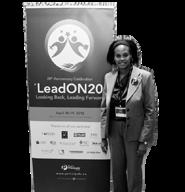

As our organization continued to grow and evolve, it was also the right time to update our corporate logo to reflect our current brand identity, goal and mission. We chose to emphasize the “P” in the new logo, to highlight our dedication to serve the principals and vice-principals of Ontario.
Following our 2018 Member survey, we realized that a more strategic approach was needed to determine our priorities and directions for the future. Our first Strategic Plan was developed, with a focus on four priority areas: Member Support, Advocacy, Professional Learning and Member Engagement. Each year those priorities are updated to outline our objectives and supporting actions in each area.
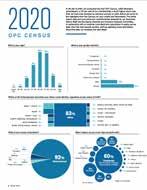
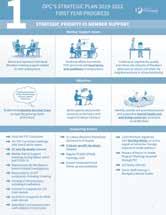
To ensure we were meeting the needs of all Members, Council passed a motion in 2019 to create an Equity, Diversity and Inclusion
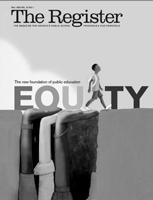
(EDI) Advisory Committee. The goals for the Committee were to focus on our organizational policies, practices and advocacy; review recruitment, retention and advancement into and within the profession; and provide professional learning to support equity, inclusion and diversity in school communities.


As part of that equity work, we knew that we needed to collect demographic data to better understand the diversity among our membership. Our first Member Census was conducted in 2020 The Census Report that resulted from this poll included 12 recommendations in the areas of member representation, focus and affinity groups, professional learning, policies and procedures and organizational outreach.
We brought on our first director of equity, diversity and inclusion, Irfan Toor, in 2021 Our EDI work to date includes the review of all Professional Learning offerings to embed principles of equity and anti-oppression; sub-committees focused on professional learning as well as recruitment, retention and advancement; District EDI Rep positions for each OPC District; and Member Affinity Groups, to bring people together over a commonality and share the mutual benefits of shared identities, forming safe and brave spaces that offer support, healing and connection.
In May 2021, on National Principal’s Day, we developed a campaign to highlight principals and vice-principals, recognizing our Members publicly. We talked about our role and responsibilities, as a way to help the public understand who we are and what we do.
The article is accompanied by a visual timeline of OPC from 1997 to present day. The following is a description of the timeline images organized by year.
1997.
Photograph of the OPC planning group at the Toronto Colony Hotel in December 1997.
A copy of Bill 160.
of The Register magazine.
Photograph of an OPC staff member seated at booth during an event.
Photograph of John Hamilton in Sault Ste. Marie.
2017.
A photograph of Allyson Otten.
The new OPC logo that was unveiled in 2017.
A photograph of the OPC office located at 20 Queen Street West in Toronto.
A photograph of a woman during a protest opposing Bill 160. 1998.
Photograph of various people doing work around a conference table.
A photograph of the Thistle Printing building.
A photograph of Rob Whetter.
The OPC’s first logo.

Photograph of OPC staff members.
Photograph of Mike Benson.
1999.
A hand-drawn depiction of the OPC’s office at 45 York Mills Road.
A photograph of Joanne Robinson.

That campaign took the form of a full-page ad in the Toronto Star and a social media campaign on our platforms.
The logo for the OPC Centre for Leadership.
Photograph of several OPC staff members on the porch of 45 York Mills Road.
The front cover for a pamphlet promoting the OPC’s First Odyssey Conference.
2000.
The local campaign was then extended to include a local component. The Principal Profile features Members highlighted through their local newspaper and on our social media sites. Those participants were then compiled into another Toronto Star ad for National Principal’s Day in May 2022


A photograph of Ontario Legislative Building in Toronto.
A photograph taken during Principal’s Day at Queen’s Park.
A photograph of various office buildings in downtown Toronto, including the OPC office at 180 Dundas Street.
2007.
At the end of 2022, Allyson Otten retired as executive director, and Nadine Trépanier-Bisson moved into the role. She was the former ED of the francophone principals’ association (ADFO) and a former principal in eastern Ontario.
The OPC Supervision Standards for Ontario Schools.
An excerpt from a newspaper article titled “Principals warn lack of supervision putting kids at risk.”
2011.
The main promotional poster for the International Confederation of Principals 2011 World Convention, hosted in Toronto by the OPC.
2013.
Photograph of the bargaining team for the OPC, CPCO and ADFO. 2015.
A photograph of Chris Hadfield on the front cover of the winter 2015 issue
For the past 25 years, we have developed dozens of resources for our Members: a website, The Register magazine, the Lead Learners blog, the Principal’s Voice podcast and targeted professional learning resources on topical issues. Many of these communication pieces have won national and international recognition for their excellence, including awards from the Canadian Association of Communicators in Education, the National School Public Relations Association, The Tabbies and the KRW Awards (the latter two awards are for business media publications).
In addition to recognizing our own Members, we also wanted to recognize non-educators who have made a significant contribution to our sector. The OPC Outstanding Contribution to Education Award has been bestowed on 20 individuals and
2018.
Page one of the progress report for the OPC Strategic Plan 2019–2022.
A photograph of several people seated at a round table.
A photograph of Mary Linton.
2020.
The front cover of the fall 2020 issue of The Register magazine. Various graphs and charts reflecting the data collected from the 2020 OPC Census.
2021.
A panoramic photograph of the OPC Wonder Wall in 2021.

organizations including Dr. Fraser Mustard, Stephen Lewis, the Honorable Murray Sinclair, Samantha Nutt, Chris Hadfield and School Mental Health Ontario.
An banner for the equity, diversity and inclusion section on the OPC website. There illustrations of people from various backgrounds, the 2SLGBTQIA+ pride flag and the Every Child Matters logo.

The 2021 National Principal’s Day ad that was featured in the Toronto Star.
2022.
A copy of one version of the Principal Profile in a local magazine.
A photograph of Nadine Trépanier-Bisson.
The logo for the OPC Leading Forward Together Conference. 2023.
In 2023, we celebrate 25 years as an organization. Our membership, consisting of practising school leaders, Term Members and Associates, is over 6,000. While much has been accomplished, our work continues. Our priorities remain developing and delivering topical, timely and job-ready professional learning; supporting Members with legal support, advice, resources and representation; advocating for school leaders, public education and the best conditions to support students; and doing all of this through an equity lens, in an environment of anti-colonialism and anti-oppression.
A promotional banner for the OPC Summit on Public Education in Canada.

A promotional banner for the OPC 25th Anniversary Gala Dinner. The front cover for the winter 2023 issue of The Register magazine.

The role of the school leader has changed and evolved over the past 25 years. The OPC works to change and evolve with it, as we recognize the importance of advocating for, supporting and training the people who lead our schools.

Our goal is to help those leaders create the safe, positive, productive learning environment in which all our students can reach their potential.
This article was prepared with contributions from several past and present OPC Members. We thank them for their time, and for sharing their memories and insights with us.
psweeney@principals.ca
Note:
The following graphs represent estimated data percentages.
Public schools welcome and support students from all walks of life. As a result, educators in public schools are responsible for meeting multiple and divergent student needs. Events surrounding the COVID-19 pandemic – such as increased anxiety, domestic abuse, neglect and school closures – as well as growing awareness of systemic societal inequities for many under-represented groups, and historical atrocities such as the discovery of unmarked student graves at residential schools, have led to an increased public awareness of student and staff trauma.
The pandemic has also provided further evidence that schools are vital to the mental health and well-being of students. This is especially true for students who are already at risk due to factors such as poverty, marginalization or
adverse childhood experiences (Ferguson et al. 2005).
Parents, caregivers, students, scholars and educators have become increasingly interested in how schools can meaningfully support staff and students who experience trauma.
In 2022, the Ontario Principals’ Council (OPC) conducted a study on trauma in public schools to better understand the experiences, challenges and opportunities of Ontario administrators toward leading a trauma-sensitive approach to education. This article provides excerpts from the final study report .
Some of the key terms used in the report and article are worth defining, because the research team used precise understandings when conducting the study.
Trauma
This study used the Centre for Addiction and Mental Health’s definition of trauma: “Trauma is the lasting emotional response that often results from living through a distressing event. Experiencing a traumatic event can harm a person’s sense of safety, sense of self and ability to regulate emotions and navigate relationships. Long after the traumatic event occurs, people with trauma can often feel shame, helplessness, powerlessness and intense fear” (Centre for Addiction and Mental Health, n.d.).
Trauma-sensitive
The term “trauma-sensitive” describes a school in which all students feel safe, welcomed and supported and where addressing trauma’s impact on learning on a school-wide basis is at the centre of its educational mission. The focus is on creating a whole-school culture that serves as a foundation for all students to learn and experience success at school (traumasensitiveschools.org). Trauma-sensitive education has been promoted as a potentially powerful tool to more effectively support students at risk, as well as a comprehensive approach to further developing student resilience (Cole et al. 2005). However, becoming a traumasensitive school can require a substantial rethinking of both educator unconscious biases and conventional pedagogical practices (Cole et al. 2013). Implementing traumasensitive education therefore poses genuine challenges for school leaders.
FIGURE 1:
Prior to the COVID-19 pandemic, and currently, what percentage of students (and their families) at your school would you estimate have been significantly impacted by trauma?
FIGURE 2:
Overall, what impact do you believe the effects of trauma have on your students’ academic performance, behaviour, and other student issues such as attendance or attitude toward school?
FIGURE 3:
On average, what percentage of your staff’s overall teaching time would you estimate is spent on dealing with issues related to student trauma?
A voluntary, anonymous online survey was sent to principals and vice-principals (P/VP) in Ontario who are Members of the Ontario Principals’ Council. In all, 652 school administrators completed the survey. Just over half (54.1%) of survey respondents were elementary principals, 18.1% were elementary VPs, 10.8% were secondary principals and 12.4% were secondary VPs. The remaining respondents worked in different administrative roles including system, acting and retired principals. In all, 25 school boards across the province were represented including larger urban school boards, smaller, rural and northern boards.
To what degree does dealing with student trauma negatively impact your staff’s well-being and contribute to their stress, or your well-being and contribute to your stress?
The administrators were asked to estimate the percentage of students in their schools impacted by trauma, both prior to the pandemic and following it (Figure 1). While prepandemic estimates varied considerably, almost one-third of administrators estimated that 10% or fewer of their student population was impacted by trauma. A further 28% of administrators placed their estimate at 10 to 20%. Estimates grew significantly when school administrators were asked to consider their students within the context of the pandemic. Almost one in four believed that 20-30% of their students were impacted by trauma. The number of administrators who believed that 30-50% of their students were impacted by trauma doubled when considering the pandemic, as compared to prior to it.
When asked to rate on a scale of 1 (low impact) to 10 (high impact) the degree to which they believe trauma negatively affects student performance, administrators indicated a strong conviction that trauma impacts academics, behaviour and other student issues such as attendance and/or overall attitude toward school (Figure 2). For example, more than one-quarter of administrators rated the impact of trauma on academic performance as 10/10. One-third rated trauma’s
impact on behaviour as 10/10. More than one-quarter rated the impact of trauma on attendance or overall attitude toward school as 10/10.
Administrators also felt that a significant amount of teaching time was spent dealing with issues connected to student trauma (Figure 3). For example, one-quarter of administrators estimated that their staff spent 10-20% of their teaching time dealing with issues related to student trauma. Another quarter estimated the time spent dealing with trauma-related issues as 20-30% of teaching time. One in 10 administrators estimated that 40-60% of teaching time was spent dealing with student trauma-related concerns.
The impact of trauma often goes beyond the individual student (Figure 4). When asked, “To what degree does dealing with student trauma negatively impact your staff’s well-being and contribute to their stress?” 80% of administrators rated the negative impact of dealing with student trauma on staff wellbeing as 7/10 or higher. One-third of administrators rated the negative impact as 9/10 or higher. School administrators also reported experiencing the effects of dealing with student trauma on their own well-being. Almost three-quarters rated the impact as 7/10 or higher. Close to one in five administrators reported the impact as 10/10.
The impact of trauma on educators is further complicated by the fact that not just students experience trauma. A number of educators, like any member of the adult population, have experienced trauma themselves, both in their personal lives and on the job. For example, three-quarters of administrators rated the impact that staff personal trauma is having on staff well-being as 7/10 or higher (Figure 5). One-third of administrators rated the impact as 9/10 or higher. Administrators also reported experiencing an impact on their own well-being from supporting personal trauma
FIGURE 5:
To what degree does the personal trauma experienced by your staff negatively impact their well-being and negatively impact your well-being?
How necessary do you think it is that your school practise using a traumasensitive approach?
FIGURE 7:
Overall, how equipped are your staff, and are you, to support students who are experiencing the effects of trauma at school?
among staff. Almost 70% of administrators rated the impact as being 7/10 or higher. One-third rated the impact as 9/10 or higher.
Consistent with their concern about the prevalence of trauma in their students and its impact on school success, administrators were strongly in favour of adopting a traumasensitive approach in education (Figure 6). The majority of administrators advocated for a trauma-sensitive approach at school, with over half rating the necessity as 10/10. A total of 85.2% of administrators rated the necessity as 8/10 or higher.
FIGURE 8:
Overall, how satisfied are you with your school’s current ability to practise from a trauma-sensitive approach?
There was less confidence among administrators that their staff are equipped to practise a trauma-sensitive approach (Figure 7). Overall, the majority of administrators rated their staff as being moderately equipped to deal effectively with students experiencing trauma. One in seven rated their staff as 1/10 or 2/10, meaning unequipped. Few rated their staff as highly equipped. Administrators rated themselves as more equipped than their staff to support student trauma, with the average response being 7/10. Only 9% rated themselves as 9/10 or higher, meaning highly equipped.
Administrators were generally not satisfied with their school’s current ability to practise from a trauma-sensitive approach (Figure 8). Only 6.3% rated their school’s overall ability as 8/10 or 9/10. Slightly more than one-third rated their school’s ability at 3/10 or lower. No administrator gave their school a 10/10, while 8.1% rated their school as 1/10.
Administrators were spread across the scale when reporting on the support they receive as a trauma-sensitive leader (Figure 9). The largest number of administrators
rated the support at 5/10. One-third rated the support received as 3/10 or lower, with almost one in 10 indicating that they receive no support. Just over one in 10 administrators rated the support they received at 8 out of 10 or better.
Administrators were asked to indicate the barriers that their staff face in more fully practising a trauma-sensitive approach (Figure 10). The most prevalent barrier, identified by 86.3% of administrators, was educator stress and burnout. This was closely followed by lack of staff training, lack of staff time and curriculum pressures. Rounding out the top eight barriers identified by administrators was lack of system resources (such as mental health supports), lack of classroom resources, lack of community resources (such as mental health services) and lack of interest among staff.
Administrators identified five major barriers that they faced in consistently leading a school-wide trauma-sensitive approach (Figure 11). The most frequently reported barrier, identified by three-quarters of administrators, was competing demands placed on their time by other administrative duties. Two-thirds identified stress and burnout as a barrier. This was closely followed by lack of time. Half of the administrators identified lack of training as a barrier, followed by lack of system support. A smaller number reported two other barriers: spending too much time out of their school and lack of interest.
Overall, to what extent do you feel supported in your promotion of trauma-sensitive leadership?
of
What, if anything, gets in the way of your staff’s ability to consistently adopt a trauma-sensitive approach? (Check all that apply)
FIGURE 10:The most frequently reported barrier, identified by three-quarters of administrators, was competing demands placed on their time by other administrative duties. Two-thirds identified stress and burnout as a barrier.
FIGURE 11:
What, if anything, gets in the way of your ability to consistently lead a school-wide trauma-sensitive approach? (Check all that apply)
2. Training: Provide more professional development to all school staff on trauma-sensitive practices, as well as both student and staff mental health and well-being. Also, allow more room for administrators to focus on mental health, trauma and well-being during regularly scheduled learning opportunities.
3. Tools: Provide practical in-class, trauma-sensitive tools for educators to use to support students day to day.
4. Staff: Increase access to and/or the number of inclass and in-school staff such as child and youth workers, as well as mental health professionals such as social workers and occupational therapists.
5. Community: Strengthen the connection between schools and community mental health resources, including Indigenous and Inuit Elders and communities, as well as community-based identity-specific organizations to support healing. Create a stronger sense of shared community responsibility for all students.
Previous research from a variety of sources, along with the responses of OPC Members to the study survey, clearly point to the need for trauma-sensitive practices in Ontario’s schools, especially post-pandemic. The results indicate that it is not enough to attend to the trauma of students and staff through professional learning and current additional support. Not attending to the trauma of students, staff and administrators can be catastrophic to our education system. Based on the research and survey responses, the OPC is making the following recommendations.
1. Time: Allocate time for school administrators to learn and lead a trauma-sensitive approach by reducing dayto-day system demands and competing pressures. Consider consolidating priorities where possible and enable administrators to collaborate with their staff and students.
6. Paradigm Shift: Recognize that authentically supporting equity, decolonization, inclusivity, trauma, mental health and well-being requires a paradigm shift in education. The system needs to rethink education’s priorities in a post-pandemic world and reduce the number of priorities, providing time for educators and students to ensure basic needs are met and learning is scaffolded for all in a more responsive way.
As an extension of these general recommendations, specific recommendations are included in the full report for different education stakeholders in Ontario: government, school districts, principals’ associations and school administrators themselves.
We hope readers have found this excerpt from the OPC Trauma-sensitive School Leadership Report 2022 informative and engaging. We encourage readers to read the full report or the executive summary and reflect on how they can support trauma-sensitive schooling.
Figure 1.
Prior to the COVID-19 pandemic, and currently, what percentage of students (and their families) at your school would you estimate have been significantly impacted by trauma? Pre-pandemic, 32% of educators estimated that 0 to 10% of students were impacted. Currently,12% of educators estimated that 0 to 10% of students were impacted. Pre-pandemic, 28% of educators estimated that 10 to 20% of students were impacted. Currently, 21% of educators estimated that 10 to 20% of students were impacted. Pre-pandemic, 14% of educators estimated that 20 to 30% of students were impacted. Currently, 23% of educators estimated that 20 to 30% of students were impacted. Pre-pandemic, 6% of educators estimated that 30 to 40% of students were impacted. Currently, 15% of educators estimated that 30 to 40% of students were impacted. Pre-pandemic, 4% of educators estimated that 40 to 50% of students were impacted. Currently, 8% of educators estimated that 40 to 50% of students were impacted. Pre-pandemic, 3% of educators estimated that 50 to 60% of students were impacted. Currently, 6% of educators estimated that 50 to 60% of students were impacted. Pre-pandemic, 2% of educators estimated that 60 to 70% of students were impacted. Currently, 4% of educators estimated that 60 to 70% of students were impacted. Pre-pandemic, 2% of educators estimated that 70 to 80% of students were impacted. Currently, 3% of educators estimated that 70 to 80% of students were impacted. Pre-pandemic, 1% of educators estimated that 80 to 90% of students were impacted. Currently, 2% of educators estimated that 80 to 90% of students were impacted. Pre-pandemic, 1% of educators estimated that 90 to 100% of students were impacted. Currently, 2% of educators estimated that 90 to 100% of students were impacted. Pre-pandemic, 8% of educators cannot estimate the percentage of students impacted. Currently, 4% of educators cannot estimate the percentage of students impacted. Figure 2.
staffs’ well-being from dealing with a level 9 degree of student trauma. 14.4% of staff and administrators witnessed an impact on their admins’ well-being from dealing with a level 9 degree of student trauma. 18.4% of staff and administrators witnessed an impact on their staffs’ well-being from dealing with a level 10 degree of student trauma. 17.5% of staff and administrators witnessed an impact on their admins’ well-being from dealing with a level 10 degree of student trauma.
Figure 5.
To what degree does the personal trauma experienced by your staff negatively impact their well-being and negatively impact your well-being? In the graph, the low to high impact of personal trauma experienced by the staff is represented on a scale of 1 to 10. Level 1 as the lowest degree of impact and level 10 as the highest degree of impact.No staff or admin witnessed a level 1 degree of impact from personal trauma having a negative impact on the staff’s well-being. 0.5% of staff or admin witnessed a level 1 degree of impact from personal trauma having a negative impact on the admins’ well-being. 1.4% of staff or admin witnessed a level 2 degree of impact from personal trauma having a negative impact on the staff’s well-being. 2.8% of staff or admin witnessed a level 2 degree of impact from personal trauma having a negative impact on the admins’ well-being. 2.3% of staff or admin witnessed a level 3 degree of impact from personal trauma having a negative impact on the staff’s well-being.
Dr. David Tranter is an associate professor in the Department of Social Work at Lakehead University in Thunder Bay. dtranter@lakeheadu.ca
Dr. Katina Pollock is a professor of educational leadership and policy at the Faculty of Education at the University of Western Ontario. katina.pollock@uwo.ca
4.8% of staff or admin witnessed a level 3 degree of impact from personal trauma having a negative impact on the admins’ well-being. 3.4% of staff or admin witnessed a level 4 degree of impact from personal trauma having a negative impact on the staff’s well-being. 4.5% of staff or admin witnessed a level 4 degree of impact from personal trauma having a negative impact on the admins’ well-being. 9.3% of staff or admin witnessed a level 5 degree of impact from personal trauma having a negative impact on the staff’s well-being. 7% of staff or admin witnessed a level 5 degree of impact from personal trauma having a negative impact on the admins’ well-being.
Figure 10.
What, if anything, gets in the way of your staff’s ability to consistently adopt a trauma-sensitive approach? (Check all that apply)
86% of admin attribute this to be educator stress and burnout.
82% of admin attribute this to be lack of training.
67% of admin attribute this to be lack of time.
64% of admin attribute this to be curriculum pressures.
51% of admin attribute this to be lack of system resources.
40% of admin attribute this to be lack of classroom resources.
37% of admin attribute this to be lack of community resources.
14% of admin attribute this to be lack of interest.
Figure 11.
Centre for Addiction and Mental Health. (n.d.). Trauma. https://www.camh.ca/ en/health-info/mental-illness-and-addiction-index/trauma#:~:text=Trauma%20is%20 the%20lasting%20emotional,regulate%20emotions%20and%20navigate%20relationships

What, if anything, gets in the way of your ability to consistently lead a school-wide trauma-sensitive approach? (Check all that apply)
74.6% of admin attribute this to be other admin duties.
64.7% of admin attribute this to be administrator stress and burnout.
63.2% of admin attribute this to be lack of time.
Overall, what impact do you believe the effects of trauma have on your students’ academic performance, behaviour, and other student issues such as attendance or attitude toward school? In the graph, the low to high impact of trauma on student performance is represented on a scale of 1 to 10. Level 1 as the lowest degree of impact and level 10 as the highest degree of impact. No administrators believe there is a level 1 degree of trauma on students’ academic performance and other student issues. 0.2% of administrators believe there is a level 1 degree of trauma on student behaviour. 0.9% of administrators believe there is a level 2 degree of trauma on students’ academic performance and behaviour. 0.6% of administrators believe there is a level 2 degree of trauma on other student issues. 1.4% of administrators believe there is a level 3 degree of trauma on students’ academic performance. 1.7% of administrators believe there is a level 3 degree of trauma on student behaviour. 1.2% of administrators believe there is a level 3 degree of trauma on other student issues. 2% of administrators believe there is a level 4 degree of trauma on students’ academic performance. 1.4% of administrators believe there is a level 4 degree of trauma on student behaviour and other student issues. 2.5% of administrators believe there is a level 5 degree of trauma on students’ academic performance. 2% of administrators believe there is a level 5 degree of trauma on student behaviour. 2.6% of administrators believe there is a level 5 degree of trauma on other student issues. 5.6% of administrators believe there is a level 6 degree of trauma on students’ academic performance. 2.3% of administrators believe there is a level 6 degree of trauma on student behaviour. 4.9% of administrators believe there is a level 6 degree of trauma on other student issues. 15% of administrators believe there is a level 7 degree of trauma on students’ academic performance. 11.6% of administrators believe there is a level 7 degree of trauma on student behaviour. 10.7% of administrators believe there is a level 7 degree of trauma on other student issues. 27.1% of administrators believe there is a level 8 degree of trauma on students’ academic performance. 24.6% of administrators believe there is a level 8 degree of trauma on student behaviour. 28.1% of administrators believe there is a level 8 degree of trauma on other student issues. 16.9% of administrators believe there is a level 9 degree of trauma on students’ academic performance. 21.5% of administrators believe there is a level 9 degree of trauma on student behaviour. 22.3% of administrators believe there is a level 9 degree of trauma on other student issues. 28.6% of administrators believe there is a level 10 degree of trauma on students’ academic performance. 33.8% of administrators believe there is a level 10 degree of trauma on student behaviour. 28.1% of administrators believe there is a level 10 degree of trauma on other student issues.
Dr. Nadine Trépanier-Bisson is the executive director of the Ontario Principals’ Council. ntrepanier@principals.on.ca
9.4% of staff or admin witnessed a level 6 degree of impact from personal trauma having a negative impact on the staff’s well-being. 11.8% of staff or admin witnessed a level 6 degree of impact from personal trauma having a negative impact on the admins’ well-being. 14.1% of staff or admin witnessed a level 7 degree of impact from personal trauma having a negative impact on the staff’s well-being. 18% of staff or admin witnessed a level 7 degree of impact from personal trauma having a negative impact on the admins’ well-being. 23.7% of staff or admin witnessed a level 8 degree of impact from personal trauma having a negative impact on the staff’s well-being. 17.8% of staff or admin witnessed a level 8 degree of impact from personal trauma having a negative impact on the admins’ well-being. 18.1% of staff or admin witnessed a level 9 degree of impact from personal trauma having a negative impact on the staff’s well-being. 15.7% of staff or admin witnessed a level 9 degree of impact from personal trauma having a negative impact on the admins’ well-being. 18.3% of staff or admin witnessed a level 10 degree of impact from personal trauma having a negative impact on the staff’s well-being. 17.2% of staff or admin witnessed a level 10 degree of impact from personal trauma having a negative impact on the admins’ well-being.
Cole, S. F., J. G. O’Brien and M. Gadd. 2005. Helping Traumatized Children Learn: Supportive school environments for children traumatized by family violence: A report and policy agenda (Vol. 1). Massachusetts Advocates for Children.
53.7% of admin attribute this to be lack of training.
41.2% of admin attribute this to be lack of system support.
3.5% of admin attribute this to be too much time spent out of their school.
2.1% of admin attribute this to be lack of interest.
Cole, S. F., E. Eisner, M. Gregory and J. Ristuccia. 2013. Helping Traumatized Children Learn: Creating and advocating for trauma-sensitive schools (Vol. 2). Massachusetts Advocates for Children.
Ferguson, B., K. Tilleczek, K. Boydell and J. A. Rummens. 2005. Early School Leavers: Understanding the lived reality of student disengagement from secondary school: Final report. Ontario Ministry of Education and Training, Special Education Branch.
Figure 6.
How necessary do you think it is that your school practise using a trauma-sensitive approach? In the graph, the necessity is represented on a scale of 1 to 10. Level 2 being not necessary and level 10 being very necessary. 0.8% of administrators think that there is a level 2 degree of necessity. 1.1% of administrators think that there is a level 3 degree of necessity. 0.9% of administrators think that there is a level 4 degree of necessity. 1.5% of administrators think that there is a level 5 degree of necessity.
3.6% of administrators think that there is a level 6 degree of necessity. 7% of administrators think that there is a level 7 degree of necessity. 19.5% of administrators think that there is a level 8 degree of necessity. 14.9% of administrators think that there is a level 9 degree of necessity. 50.8% of administrators think that there is a level 10 degree of necessity.
Figure 7.
Figure 3.
On average, what percentage of your staff’s overall teaching time would you estimate is spent on dealing with issues related to student trauma? 19.3% of administrators spent 1 to 10% of their teaching time. 25.3% of administrators spent 10 to 20% of their teaching time. 24.2% of administrators spent 20 to 30% of their teaching time. 13.4% of administrators spent 30 to 40% of their teaching time. 5.1% of administrators spent 40 to 50% of their teaching time. 5% of administrators spent 50 to 60% of their teaching time. 2% of administrators spent 60 to 70% of their teaching time. 1.9% of administrators spent 70 to 80% of their teaching time. 0.8% of administrators spent 80 to 90% of their teaching time. 0.6% of administrators spent 90 to 100% of their teaching time. 2.5% of administrators cannot estimate the amount of their teaching time.
Overall, how equipped are your staff, and are you, to support students who are experiencing the effects of trauma at school? In the graph, the staff and admin abilities in being equipped for supporting students who are experiencing the effects of trauma at school is represented on a scale of 1 to 10. Level 1 being unequipped and level 10 being highly equipped. 4.4% of staff have a level 1 degree of being equipped. 0.5% of admin have a level 1 degree of being equipped. 9.5% of staff have a level 2 degree of being equipped. 4% of admin have a level 2 degree of being equipped. 15.2% of staff have a level 3 degree of being equipped. 7.6% of admin have a level 3 degree of being equipped. 12.9% of staff have a level 4 degree of being equipped. 7.3% of admin have a level 4 degree of being equipped. 19.1% of staff have a level 5 degree of being equipped. 13.2% of admin have a level 5 degree of being equipped. 17.3% of staff have a level 6 degree of being equipped. 17.9% of admin have a level 6 degree of being equipped. 14% of staff have a level 7 degree of being equipped. 22.1% of admin have a level 7 degree of being equipped. 5% of staff have a level 8 degree of being equipped. 18.2% of admin have a level 8 degree of being equipped. 1.9% of staff have a level 9 degree of being equipped. 6.9% of admin have a level 9 degree of being equipped. 0.8% of staff have a level 10 degree of being equipped. 2.2% of admin have a level 10 degree of being equipped.
Figure 4.
To what degree does dealing with student trauma negatively impact your staff’s wellbeing and contribute to their stress, or your well-being and contribute to your stress?
0.2% of staff and administrators witnessed an impact on their staffs’ well-being from dealing with a level 1 degree of student trauma. 0.5% of staff and administrators witnessed an impact on their admins’ well-being from dealing with a level 1 degree of student trauma. 1.5% of staff and administrators witnessed an impact on their staffs’ well-being from dealing with a level 2 degree of student trauma. 2.9% of staff and administrators witnessed an impact on their admins’ well-being from dealing with a level 2 degree of student trauma. 2% of staff and administrators witnessed an impact on their staffs’ well-being from dealing with a level 3 degree of student trauma. 4.2% of staff and administrators witnessed an impact on their admins’ well-being from dealing with a level 3 degree of student trauma. 2.5% of staff and administrators witnessed an impact on their staffs’ well-being from dealing with a level 4 degree of student trauma. 3.7% of staff and administrators witnessed an impact on their admins’ well-being from dealing with a level 4 degree of student trauma. 5.6% of staff and administrators witnessed an impact on their staffs’ wellbeing from dealing with a level 5 degree of student trauma. 7.4% of staff and administrators witnessed an impact on their admins’ well-being from dealing with a level 5 degree of student trauma. 7.7% of staff and administrators witnessed an impact on their staffs’ well-being from dealing with a level 6 degree of student trauma. 8.8% of staff and administrators witnessed an impact on their admins’ well-being from dealing with a level 6 degree of student trauma. 19.7% of staff and administrators witnessed an impact on their staffs’ well-being from dealing with a level 7 degree of student trauma. 16.9% of staff and administrators witnessed an impact on their admins’ well-being from dealing with a level 7 degree of student trauma. 26.8% of staff and administrators witnessed an impact on their staffs’ well-being from dealing with a level 8 degree of student trauma. 23.7% of staff and administrators witnessed an impact on their admins’ well-being from dealing with a level 8 degree of student trauma. 14.7% of staff and administrators witnessed an impact on their
Our reciprocal group exchanges offer life-changing experiences, enabling youth to build self-confidence; form new friendships; and inspire them to become more actively engaged in their communities. Apply today - We’ll cover the travel costs for your whole group!


Figure 8.
Overall, how satisfied are you with your school’s current ability to practise from a trauma-sensitive approach? In the graph, the admins’ level of satisfaction on their school’s current ability to practise from a trauma-sensitive approach is represented on a scale of 1 to 10. Level 1 being not satisfied and level 10 being very satisfied.
8.1% of admin have a level 1 degree of satisfaction. 12.2% of admin have a level 2 degree of satisfaction. 14.1% of admin have a level 3 degree of satisfaction. 13% of admin have a level 4 degree of satisfaction. 17.5% of admin have a level 5 degree of satisfaction. 15.3% of admin have a level 6 degree of satisfaction. 13.6% of admin have a level 7 degree of satisfaction. 4.9% of admin have a level 8 degree of satisfaction. 1.4% of admin have a level 9 degree of satisfaction. No admin has a level 10 degree of satisfaction.
Figure 9.
Overall, to what extent do you feel supported in your promotion of trauma-sensitive leadership? In the graph, the level of support felt by the admin in their promotion of trauma-sensitive leadership is represented on a scale of 1 to 10. Level 1 being no support and level 10 being extensive support. 9% of admin had a level 1 degree of support. 11.7% of admin had a level 2 degree of support. 13% of admin had a level 3 degree of support. 11% of admin had a level 4 degree of support. 18.3% of admin had a level 5 degree of support. 13.3% of admin had a level 6 degree of support.
11.4% of admin had a level 7 degree of support. 8.7% of admin had a level 8 degree of support. 3% of admin had a level 9 degree of support. 0.5% of admin had a level 10 degree of support.



Schools experienced unprecedented occasional teacher shortages during the pandemic. It was expected that as pandemic risks decreased, these shortages would also decrease. However, the reality is that schools continue to experience occasional teacher and other staff shortages. School boards are under restrictions when it comes to hiring occasional teachers based on the language incorporated in the occasional teachers’ collective agreement. Due to these restrictions, even if the school boards have exhausted their limits for hiring occasional teachers, schools continue to experience occasional teacher shortages

In most schools, mutiple admin are responsible for making sure that all staff absences and supervision duties are covered. When several jobs are open in the morning, there is only one way to keep students safe and the school functioning: deploy teachers who have some flexibility in their timetable (such as Resource, English as a Second Language, Library), or cancel prep time. This type of coverage puts schools at risk for several reasons.
risk while adversely impacting staff mental health and well-being. However, the immediate concern for any administrator is to ensure student safety and quality learning during the day in the least disruptive manner. The Ontario Leadership Framework (OLF) is a great reference tool to strategize and find local, sustainable solutions – I often use it to my advantage.
1. It impacts student safety during recess and lunch because teachers are limited by their collective agreement in terms of the number of supervision minutes required of them per week. So even if classes are covered, supervision duties are not.
2. Students do not get the support and resources they need and deserve.
3. Teachers lose prep time, and sometimes schools are unable to pay those preps back within a 15-day period as stipulated in teachers’ collective agreements. This situation leaves school boards vulnerable to grievances for not complying with the collective agreement.


4. The teachers who are used for such coverage on a consistent basis are unable to deliver, assess and evaluate the curriculum they are responsible for, thereby creating and/or widening gaps in student learning.
In the long term, occasional teacher shortages put students’ academic growth at
This is an important tool for any administrator because a cleverly laid-out timetable can open endless possibilities. For optimal utilization of human resources, knowledge of collective agreements, working hours and payment schedules is helpful to administrators. In the old schedule, teaching staff were using their supervision minutes to fill in for the lunchroom staff. By changing the work schedule of lunchroom staff members, we increased available teacher supervision minutes to enhance supervision during recess, and before and after school. Our timetable was also used to create a “Coverage Team.” Members of this team could be used for internal coverage if there were unfilled jobs. The challenge was to use the coverage team without overwhelming the team members and minimizing disruptions to their own schedule.
Job fill rate of daily vacancies can be impacted by how the school is perceived by
the occasional staff. This fact was highlighted when I reached out to occasional staff members to invite them to our school. Our school was perceived as a difficult one, so occasional staff were not too eager to come to the school. To remedy this situation, both my principal and I created and worked on this action plan:
a. Welcome the supply staff and orient them to the school when they arrive in the morning, and check in with them during lunch and after school to see if there is anything we can do to help.
b. Frequently visit the classes where occasional staff are working.
c. Share my cellphone number with supply staff so they can call me if they need support.
With enhanced welcome and support structures in place, we saw consistent improvement in our job fill rate.
Building Relationships: Covering unfilled jobs requires collective and concerted efforts from all staff and administrators, thus highlighting the importance of collegial relationships. As a new administrator, I was able to develop good working relationships by respecting people’s identity, using simple strategies like learning the correct pronunciation of staff members’ names, and taking a genuine interest in getting to know them, their interests and aspirations. I also
Occasional teacher shortages put students’ academic growth at risk while adversely impacting staff mental health and well-being.
started a weekly “Thankful Thursday” email highlighting the contributions of all staff members who helped the larger community of the school.



These emails were very well received, as they not only allowed the staff to see how their actions were making a difference in the school community, but also helped them learn from each other. The staff feedback in formed me that these emails brought them together as one big team! During my conver sations, I actively listened to staff and tried to work collaboratively with them to help resolve any issues they might be experienc ing. I learned that by putting people first, focusing on their strengths, and recognizing and applauding their contributions toward the smooth functioning of the school, we could develop a cohesive school community.
Leveraging Relationships: pandemic, there came a point in Novem ber 2021 when the job fill rates declined steeply, as unvaccinated teaching staff and those who did not disclose their vaccination status were told they could not work. This extreme staff shortage was an all-handson-deck kind of situation. Our staff over whelmingly supported us during this time, and I attribute this collaboration to the team-building strategies described above.
The staff went above and beyond their regular duties. They took it upon them selves to enter their absence in the system as soon as possible and tried to book occa sional teachers on their own. Many times, staff members who had to take time off for a personal appointment changed their ap pointments – without even telling me – to match the availability of occasional staff members, or booked their appointment in such a way that they could work half a day! They also readily agreed to cover
a class internally. In fact, the coverage team started to check in with me every morning to see if I needed them to cover a class.
Once report cards came on the horizon in January, I sensed some frustration among members of the coverage team. Although no one was saying anything explicitly, it was clear that they weren’t as happy to see me in the morning, because my arrival was sort of a signal that their class would be folded. Even though their actions were subtle, they were enough to raise a red flag for me. I needed to do something to keep our staff happy and motivated. I discussed it with my principal, and we agreed to call a coverage team meeting. The purpose of the meeting was to acknowledge and appreciate all the help that we had received so far, understand the challenges that the coverage team were facing at the moment, and invite solutions.
We had a great meeting where staff shared their concerns. The team was worried as report cards approached and they were not sure if they had enough marks. Homeroom teachers were not happy when students’ support was cancelled. Some homeroom teachers expressed
dismay to the coverage team members when they approached to disclose the news of covering another class, and that impacted staff relationships with one another.

I learned that it is important for leaders to continuously have a pulse of their building, and at the first subtle signs of unrest, we should stop to listen and find ways of moving forward collectively. The meeting with the coverage team was very productive and made staff members feel heard, supported and invigorated.
Based on our meeting with the coverage team and the feedback received, our admin team recognized and acknowledged the impact of the situation on staff’s mental health and social relationships. The coverage team felt that it was important to be transparent in regards to cancelling student supports to fill vacant jobs, because homeroom teachers didn’t always understand why students’ supports were being cancelled. We felt the need to ground our actions in co-created guiding principles, and based on suggestions from the coverage team, we came up with the following:
a. We agreed that major disruptions in daily schedules would be announced during morning announcements.
b. Every staff member would get at least one prep per day.
c. We would respect the coverage team’s priorities by discussing whether they had already planned something urgent for the day, and respect their plans.
d. Multiple people (between two to five) would be asked to cover a full day job so coverage staff could still do at least a part of their own job.
I noticed a huge change in attitude once we started implementing this collaborative plan. The coverage staff were happy and motivated; homeroom teachers were well-informed and no one was feeling guilty. I learned that when the staff feels heard, appreciated and supported, they respond by paying it forward to the students, which results in a calmer and more motivated school community.
To me, the biggest learning in the process was understanding the value of focusing on mental health and well-being of all stakeholders. As administrators, it is our job to create conditions where staff and students thrive. By providing support to Occasional teachers, hearing the suggestions of the cover-
By putting people first, focusing on their strengths, and recognizing and applauding their contributions toward the smooth functioning of the school, we could develop a cohesive school community.
age team and working collaboratively with staff, the underlying message to the staff was clear: we are here to support you in the work that you do. With this learning, we invited ideas from our Well-being Committee to organize monthly wellness activities to help boost staff and student morale.
Our first event was Hot Chocolate Day in January. Students had a longer recess to create snow structures and everyone received hot chocolate afterwards. The event was a huge success and resulted in an evident change of attitude among staff and students. This motivated the Well-being Committee to start organizing monthly wellness activities in the school.
During the height of the pandemic, when social media was full of stories of staff burnout,

students and staff at our school were happy, relaxed and engaged in learning. I learned the importance of mental health and well-being of school communities and how a positive state of mind keeps the staff motivated to accept and overcome challenges. This beautiful quote by author Simon Sinek sums up my learning: “Leadership is not about being in charge. Leadership is about taking care of those in your charge.”
In conclusion, internal coverage of unfilled jobs might be a simple task but when we put some heart into it, the school communities thrive. The result of our efforts was a calm and productive school where students could learn without disruptions. My key takeaway was that when situations cannot be altered,
we should make the most of them, which is a challenge that can only be overcome by a strong team.
School leaders can develop strong teams by prioritizing people and capitalizing on their strengths, by supporting the mental health and well-being of those around us, and by being collaborative and transparent in the decision-making process. The problem of occasional teacher shortages took me on a learning journey, and the lessons learned during this journey continue to guide my decision-making process as I explore myself as a leader.
s
A full-page portrait-style collage with a mix of elements on the five attributes. This includes binoculars, lighthouse, helm, lion as leader elements, chess piece to symbolize strategy, an Olympic runner to symbolize high-performance, a couple high-fiving to symbolizing the establishing of connections, and a clock to symbolize managing workflow. Illustration by Matthew Billington.


Note: This article was first published in the author’s newsletter, Nothing Unsaid, in October 2022.
five attributes of






Icare a great deal about the future of the leaders in our public schools. Now, more than ever, we will require the bravest, brightest and most innovative educators to take on this important work.
In this current employment and socio-economic landscape – where educators are considering other job possibilities or entering retirement – we will need to intensively support those leaders who choose to stay. There is a specific set of skills required to address the future needs of our students. Is this a tall order? Yes. And it’s time to think differently about how best to prepare new and future school leaders.
There are key attributes that are non-negotiable to thrive and excel in the vice-principal and principal roles.
For the purposes of this article, I am going to make two assumptions that future leaders will have these baseline attributes.
a. These candidates have excellent understanding of effective classroom instruction. I am going to assume that planning, delivery, assessment and evaluation are all solidly in place. They know what good pedagogy looks like and have good credibility when it comes to classroom teaching and learning.
b. These candidates genuinely enjoy and love making a difference in the lives of all students, especially those from marginalized backgrounds. No person will ever have the necessary impact in schools if they don’t love the day-to-day student contact and interactions.
Ideally, significant time, energy, training and effort would be invested so that administrators have these five key attributes:
• high levels of emotional resilience and emotional regulation
• proficient at establishing incredible connections with people – especially students and staff – who need our help the most to advocate for what they need
• expert communicator
• workflow genius and

• politically savvy, strategic and astute.
It is my belief that this is the number one characteristic that a viceprincipal or principal must possess. I recognize that this characteristic can be called something else (emotional intelligence, emotional
literacy, social intelligence, emotional awareness, etc.), but this area is a “must have.”
A person who is easily offended, agitated, angered or frustrated is not the right fit.
Instead, the role requires individuals with strong empathy, who are highly aware of their own emotions and their intensity. Furthermore, they need to know how their behaviour or demeanour impacts their school community. The role requires a person who can remain calm and still exercise good judgment in difficult situations. The ability to lead with empathy and to think critically in intense and emotional situations are skills that can be difficult to learn and execute. The job requires a person who is calm, steady and predictable – a person who does not escalate quickly. The ideal candidates are people who can not only manage their own emotions in situations of difficulty, but can also support other adults and students in stressful situations.
The ideal candidates are experts in not taking things personally, and can always separate the person from the behaviour on display. The mindset of not being easily offended (or surprised) is a huge asset. These individuals also know that it is well worth their time and energy to defuse situations that are escalating.
Such highly professional persons understand that not everyone will like them, and they are okay with that. They also understand that sometimes, their personal opinions don’t matter or are not relevant. They accept that being well-liked is not always part of the gig. Their attention is focused on what’s best for kids, and if some of that flies in the face of popular approval, so be it. They are comfortable enough in their own skin to feel confident in their decision-making, and have the skills to navigate any objections or criticism that might follow.
These high-performing school leaders can bounce back from tough situations quickly and know that it’s much healthier to “let things go” rather than spending energy on things that are in the past or things they cannot control.
The ideal candidate for this role is obsessed with the business of building connections and does this instinctively. Building great connections with people from all walks of life is in this person’s DNA and is always top of mind.
Such “builders of people” know that facilitating and connecting is everything. They build rapport and trust quickly, especially with people who need them the most. They are curious about people’s personal stories and seek deep understanding of their backgrounds. They energize the people around them, and they know that they have high credibility because their words and actions match. They are highly visible, and people seem to enjoy being in their presence.
They have robust networks around them and there is a long line of educators who want to join their team.
These relationship builders are also highly personable, relatable and authentic. They know and are genuinely interested in the personal lives of the people they work with and the students they serve – such an individual is a true “people person.” This approachability and relatability is especially relevant for students and staff who may not fit the traditional profile. These individuals recognize, acknowledge and advocate for people from diverse backgrounds, both students and staff, in their care.
Attribute #3: They are expert communicators

Modern principals and vice-principals have a thousand different lines of communication open all at the same time. This is not a responsibility to take lightly.
These educators are respectful, articulate, clear and concise. They are considerate but don’t mince words, and always know their audience. They are sensitive to race, gender, class, sexual orientation and ability. They are sensitive to how institutions and organizations are structured and how they might help or hinder people’s access to opportunities.
Being an expert listener is an important part of being an expert communicator, and the ideal candidates are highly skilled at listening for understanding, rather than listening to simply formulate a response. They are also in touch with the “hidden message” that may be buried in the undercurrent of an issue. They understand and acknowledge where there may be bias from themselves and others. They know when to ask the deeper question to get to the root of the issue.
In terms of feedback, these people are always asking to receive and provide relevant feedback. Their feedback loop operates in both direc-

tions. They speak openly and with candour. No breath is wasted on hearsay or gossip. These negative streams of communication get shut down quickly because they serve no purpose.

These people speak and act with intention and consideration. There is little left unsaid, no room for assumptions, and tough news is delivered in a caring manner where the purpose is always to improve and not to tear down.
They are also dialed in to the importance of their tone, gestures and body language. They carry themselves (physically) in a positive manner and put out good energy with how they always behave.
Attribute #4: They are geniuses at creating and managing their workflow
What exactly do I mean by this? Let me elaborate.

These people build operating systems that work for them. They don’t allow other people or other events to continuously drive or dictate their workflow, focus or attention. They know exactly where they are headed and have guardrails in place to protect these objectives. They protect their time and energy at all costs. They prioritize and confidently communicate their priorities. They appreciate and value how technology can assist them without letting it become robotic or impersonal.
These educators automate, delegate or eliminate. They are easily able to prioritize what needs to be done and can sift through the nonimportant with efficacy. They quickly recognize competing priorities and know where to focus their energy and attention.
Now, more than ever, we will require the bravest, brightest and most innovative educators to take on this important work.
These leaders do not micromanage the people around them. They lift them up, trusting that when a task is assigned to a member of their team, it gets done. In the rare instance that something isn’t done on time or correctly, there is a coaching opportunity, and the conversation is around responsibility or accountability. There is no blame or shame.
These people know to focus on the big stuff and to look beyond the noise, silliness and distractions. Efficiency is a top priority.
Attribute #5: They are politically savvy, strategic and astute In short, they know and understand who is connected to whom. They also understand who influences whom.
They pay close attention to these alliances and are constantly checking in with a wide cross-section of school community members for input, and not just the ones who are the loudest. They are especially dialed in with the under-represented groups, understanding that those voices are not always heard.
These leaders recognize their own influence and are aware of intention versus impact. They pay close attention to this and keep it in mind when communicating ideas and initiatives. This is highly tactical and truly important when working through complex problems and initiatives – both at the school and district levels.
They know with pretty good accuracy who is saying what and to whom. They understand how information flows from board to school, from school to parents, from admin to staff and from staff to students. They can predict and anticipate what types of issues may arise next. They are not surprised by likely outcomes, objections or criticism because they have good intuition and trust that they can handle whatever comes their way. More importantly, this allows vice-principals or principals to act quickly when their intuitions do become reality, because they’ve already thought about how they might proceed.
At the school level, high-performing school leaders prioritize their decision-making based on what’s best for students and what their teachers are communicating. They are not afraid to hold underperformers accountable, providing feedback to them on an individual and differentiated basis.
I acknowledge that many will have a different list of “top five” attributes compared to the ones that I have outlined here, and that’s okay. For many boards, the criteria for selecting future
leaders will depend on a long list of leadership competencies that may vary greatly. At this point in time, these five resonate with me. I am aware of and open to the possibility that I may need to revisit my selections – in terms of their future relevance or importance – especially as the landscape in our schools continues to evolve.
Setting all that aside, here’s what I care about the most.
I care that we’re having this conversation, listening to each other’s points of view – especially if someone sees this in a different way than I do – so that we can determine what is relevant and practical and what is not. Growth happens in non-linear ways.
I want the group of future school leaders to know that the current group of leaders is already looking ahead at how to best support them. We need to share what we have already learned with this aspiring group, while being truly generous in how we contribute to their future success.
Jen Shirley is a substitute principal and vice-principal in the OttawaCarleton District School Board.
jennifer.shirley@ocdsb.ca
Anderson, Dave. 2015. It’s Not Rocket Science. Los Angeles: Wiley. Carrington, Jody. 2019. Kids These Days. Canterbury, UK: Impress.
Choudhury, Shakil. 2015. Deep Diversity: Overcoming Us vs. Them. Vancouver: Between the Lines.
Godin, Seth. 2018. This is Marketing. Westminster, UK: Portfolio. Shankar, Stuart, and Susan Hopkins. 2019. Self-Reg Schools. A Handbook for Educators. Westminster, UK: Pearson Canada.
Shankar, Stuart, and Susan Hopkins. 2019. Self-Reg Schools. A Handbook for Educators. Westminster, UK: Pearson Canada.
e Canadian Trillium College (CTC) is a certi ed Ontario school program in China, o ering Chinese students the opportunity of earning credits towards the OSSD.


We are now recruiting Ontario quali ed administrators and teachers for the following subject areas:
•ESL (Levels 2-5)
•Intermediate and Senior English, Mathematics, Business, Physics, Chemistry, and Social Sciences
•Principals
Contract Terms: Competitive salary and bonus, return airfare, free private furnished accommodation, assistance for medical insurance and more.
is is an ideal opportunity for retired teachers and administrators, beginning teachers and teachers on leave who are looking for an amazing cultural experience and adventure.
You can visit our website at http://www.ctc-schoolchina.com
For more information contact the Supervising Principal at the address below:
Forward resume and cover letter to:
June 8
June 2023 Special Education for Administrators Qualification Program (SEAQP)
Application deadline: May 25
9
ELDP: Module 9 – Life-Balance for Aspiring Leaders
Application deadline: June 2
12
PDC: Module 5 – Building a Digital Leadership Portfolio
Application deadline: May 29
PDC: Module 14 – Leading the French Immersion School
Application deadline: May 29
15
Principal Coffee Connections Drop-in session
July
4
PQP Summer 2023
Application deadline: June 13
President Patsy Agard president@principals.ca
Executive Director
Nadine Trépanier-Bisson ntrepanier@principals.ca
6
Reculturing Your School
Application deadline: June 29
9
SOQP: Module 1 – The Personal Perspective or Module 3 – The Provincial Perspective
Application deadline: June 11
10
MQP Summer 2023
Application deadlin: June 26
12
SOQP: Module 2 – Leadership and Organizational Change Perspective or Module 4 – The System Perspective
Application deadlin: June 11
14
ELDP: Module 10 – Fostering a Culture of Reconciliation in our Schools
Application deadline: July 7
17
PDC: Module 9 – Leading the Innovative School
Application deadline: July 3
PDC: Module 18 – Anti-Oppressive School Improvement
Application deadline: July 3
17–19
Mentor-Coaching Institute Summer 2023
Application deadline: June 23
August 11
ELDP – Module 11 – Leaders Supporting French as a Second Language Program in Ontario
Application deadline: August 4
14 – 15
Creating Safe and Inclusive Schools
Application deadline: August 7
18
An Overview of School Level Implementation of the Right to Read
Application deadline: August 11
September
15
ELDP: Module 12 – Supporting Student Mental Health
Application deadline: September 8
Communications Peggy Sweeney psweeney@principals.ca
Protective Services Aditi Sayed asayed@principals.ca
Professional Learning learning@principals.ca
Membership Services membership@principals.ca
General Inquiry admin@principals.ca
 By Ingrid Fetell Lee
By Ingrid Fetell Lee
Little, Brown Spark, New York
ISBN: 978-0-316-39927-2
Reviewed by Alison Osborne
Joyful by Ingrid Fetell Lee is a delightful book that explores the role of joy in our lives and how we can cultivate it through our surroundings and everyday experiences. In her book, Lee argues that joy is not just a fleeting emotion, but a
powerful force that can enhance our creativity, productivity and overall wellbeing. Drawing upon scientific research and many personal anecdotes, Lee explores the many ways in which we can find and create joy in our lives, from the colour of our surroundings to the shapes of everyday objects.
One of the strengths of this book is how it applies the principles of joy to various aspects of our lives, including our homes, workplaces and communities. For school principals, this means recognizing the impact our environment has on the well-being of our students and staff. By intentionally creating a more joyful and positive school culture, we can promote creativity, learning and overall happiness for our school community.
In reality, this book isn’t about education or about schools or students; it’s about finding joy in the world around us. There are big issues facing educators
in schools right now, and this book isn’t truly about that. Rather, it is about small things individuals can do to find joy for themselves and, in so doing, take greater control of their world. Throughout the book, Lee provides practical strategies for finding and creating joy, such as incorporating more colour and natural elements into our surroundings, seeking out playful experiences and cultivating gratitude. She also encourages readers to embrace the idea of “joie de vivre,” or the joy of living, by approaching life with a sense of curiosity and wonder.
The author approaches the topic of joy with a sense of curiosity and openmindedness. Rather than prescribing a one-size-fits-all approach to happiness, she encourages readers to explore their own unique sources of joy and to be open to discovering new ones. She asks the reader to self-reflect and consider questions such as, “Where do
I feel most joyful?,” “What activities bring me joy?” and “Who are the most joyful people I know?” Lee also provides prompts to encourage the reader to prioritize creating joy in the world around them.
School principals are so often overwhelmed by things that cannot be controlled. Driven to succeed, we are likely to put our head down and work harder to tackle the big uncontrollable issues in education. This book reminds us to take a breath and begin to look for the things we can do to create joy in our lives. Prioritizing happiness in our world and surroundings is one way for us to take care of our own wellness.
This book is a reminder that small changes can make a big difference in promoting joy and well-being in our daily lives. By intentionally cultivating joy in our surroundings and experiences, we can create a more vibrant and fulfilling life for ourselves and those around us.
Being a school administrator is filled with emotional and physical labour and can also be isolating and lonely. We are surrounded by people all day: students, staff, parents
and community. The very nature of our role is to provide support, mentorship, leadership and care. So, who do you turn to when care is needed for yourself?
I often think of the Audre Lorde quote, “Caring for myself is not self-indulgence, it is self-preservation, and that is an act of political warfare.” I take this quote to heart, and think that as administrators engage in anti-racist, anti-oppressive and social justice work, we need to find ways to fill our souls, our hearts, our minds and our physical bodies with care and goodness, or we risk burnout, an inability to empathize or an inability to make a difference. I cannot lead in or change a broken and unjust system if I cannot find ways to care for myself.
What self-care looks like will be different for everyone. For me, it means that I want to have a balance of wellness all around – physical, mental, spiritual and relational health. Of course, I have yet to be in perfect synchronicity in all areas of wellness, but I do know that when one area is ignored and isn’t well, other areas falter shortly after.
I’ve found some aspects of wellness are easier to build into a routine: nutrition, exercise, meditation, journalling and spending time with friends or time alone. For me, the efforts I take to care for my spirituality are the most challenging, but also the most impactful with the greatest rewards. I am most at peace when I am intentional about my spiritual well-being, and focus on my purpose in life and on living it with gratitude.
Of course, each day brings its own challenges and hardship, and to get through I often remind myself of my “why.” As author Simon Sinek says, “Find your why.” If your “why” is for money, power, promotion or status, that becomes abundantly clear to others and it makes everything an uphill battle. When I remind myself about why and for whom I do this work, I can continue with a sense of ease. I see life’s challenges as little tests where I know I don’t have all the answers, but part of the fun is figuring it out with the support of amazing friends and colleagues.
Living a life of gratitude has resulted in positive changes not only in my own outlook, but also that of others around me. Imagine for a moment: you’re on the beach, the weather is warm, the waves are lapping, the sun is setting … and all you can think of is the mosquito that just bit you. Like any zoom lens, when we fixate on our problems, we magnify them until they are the only thing we can see. For me, self-care now means that I am intentional in appreciating what is good. I’m not suggesting I ignore the problems or the mosquito bite, but rather that I deal with them as needed. Doing so with a greater appreciation of what is working often minimizes what isn’t.
Being an administrator takes a physical, emotional, spiritual and relational toll. We cannot expect to continue without ensuring that we are finding ways to heal our whole selves – our minds, bodies and souls. We want to do our best for everyone. Let us commit to doing that for ourselves as well.



























